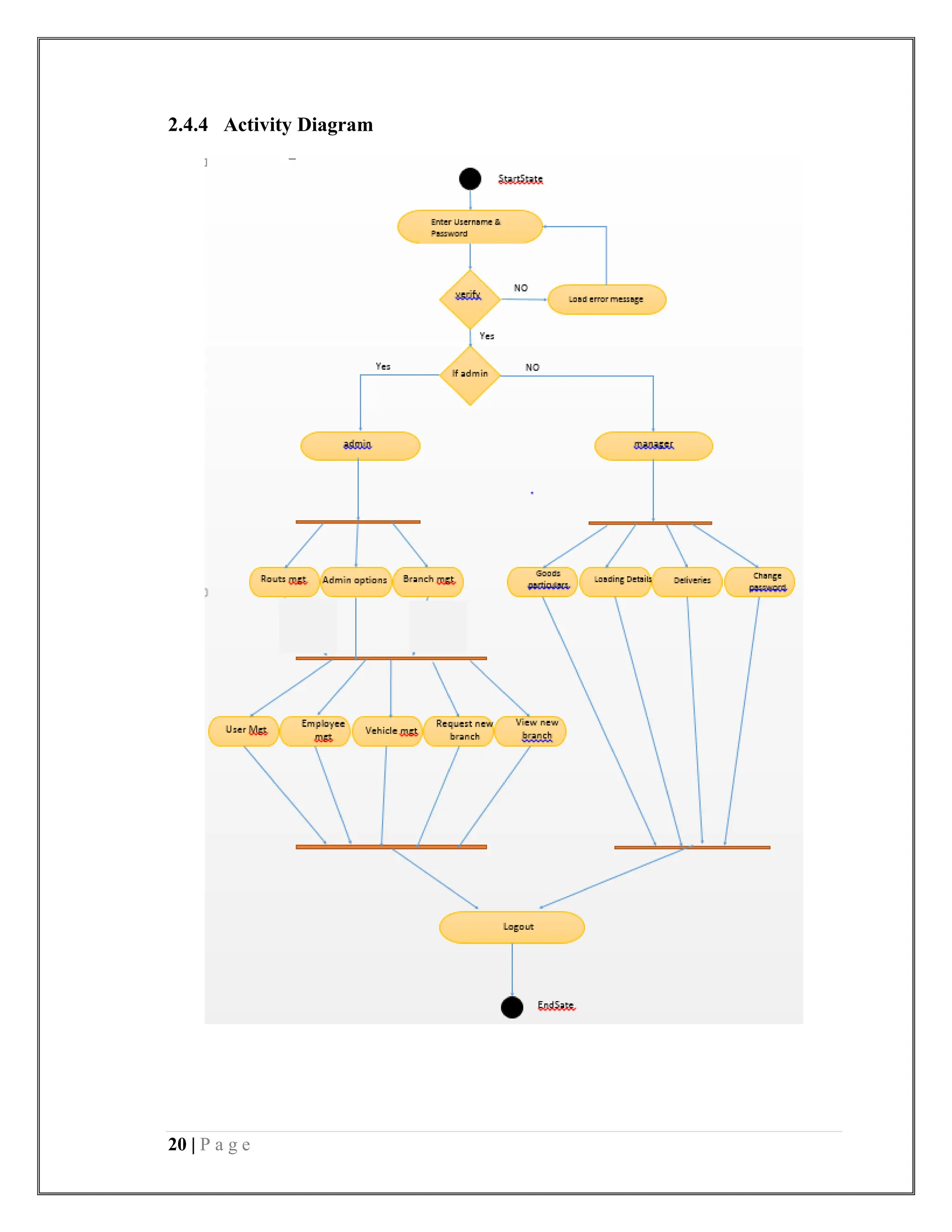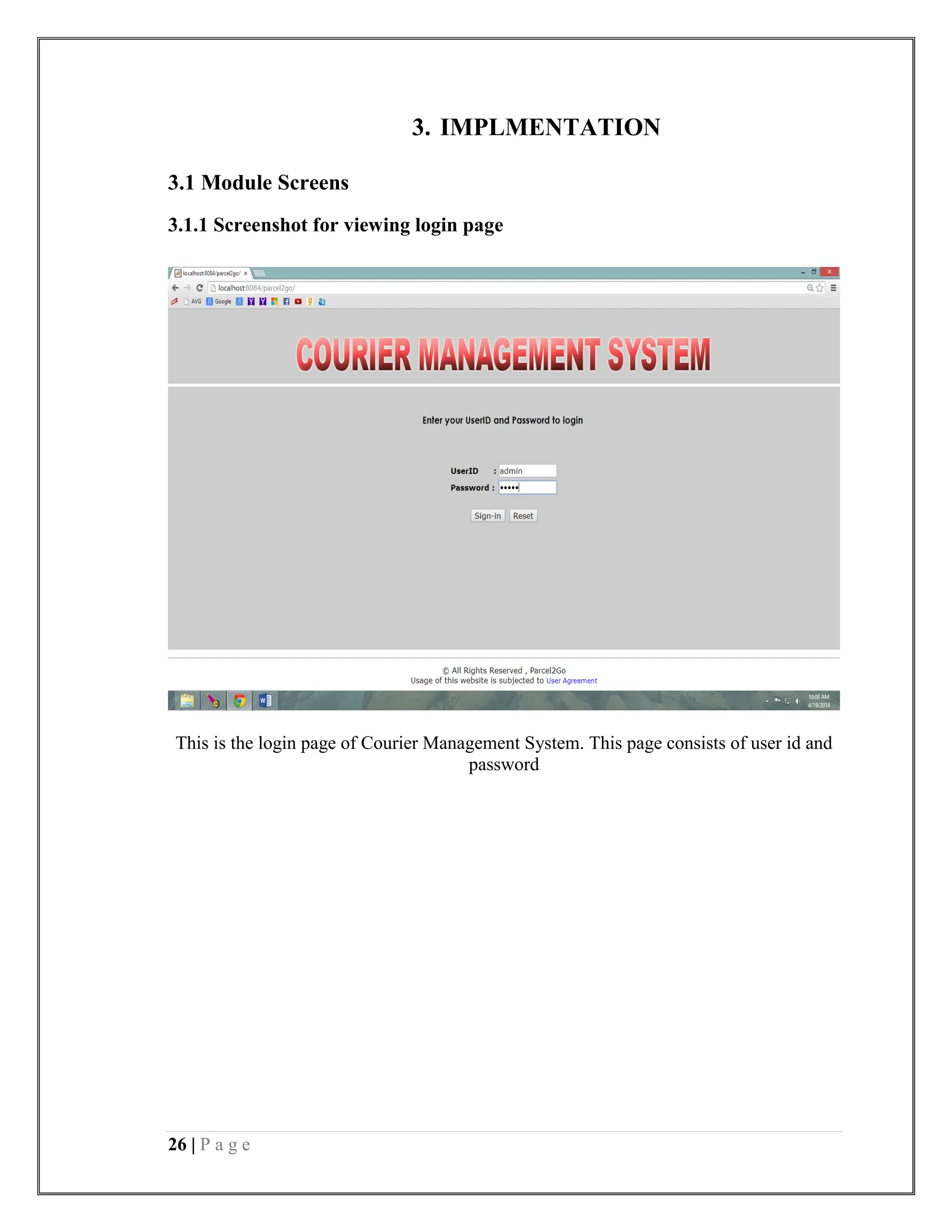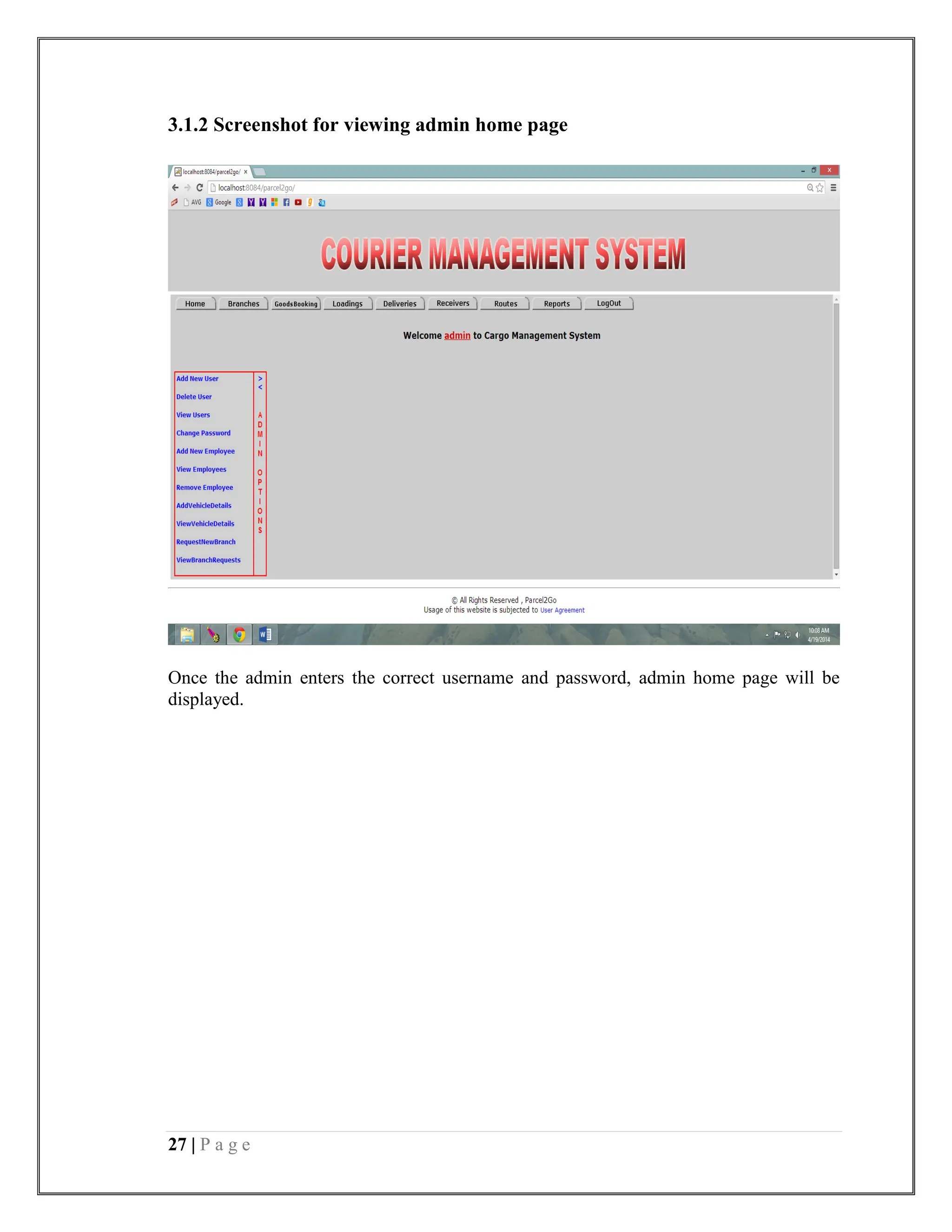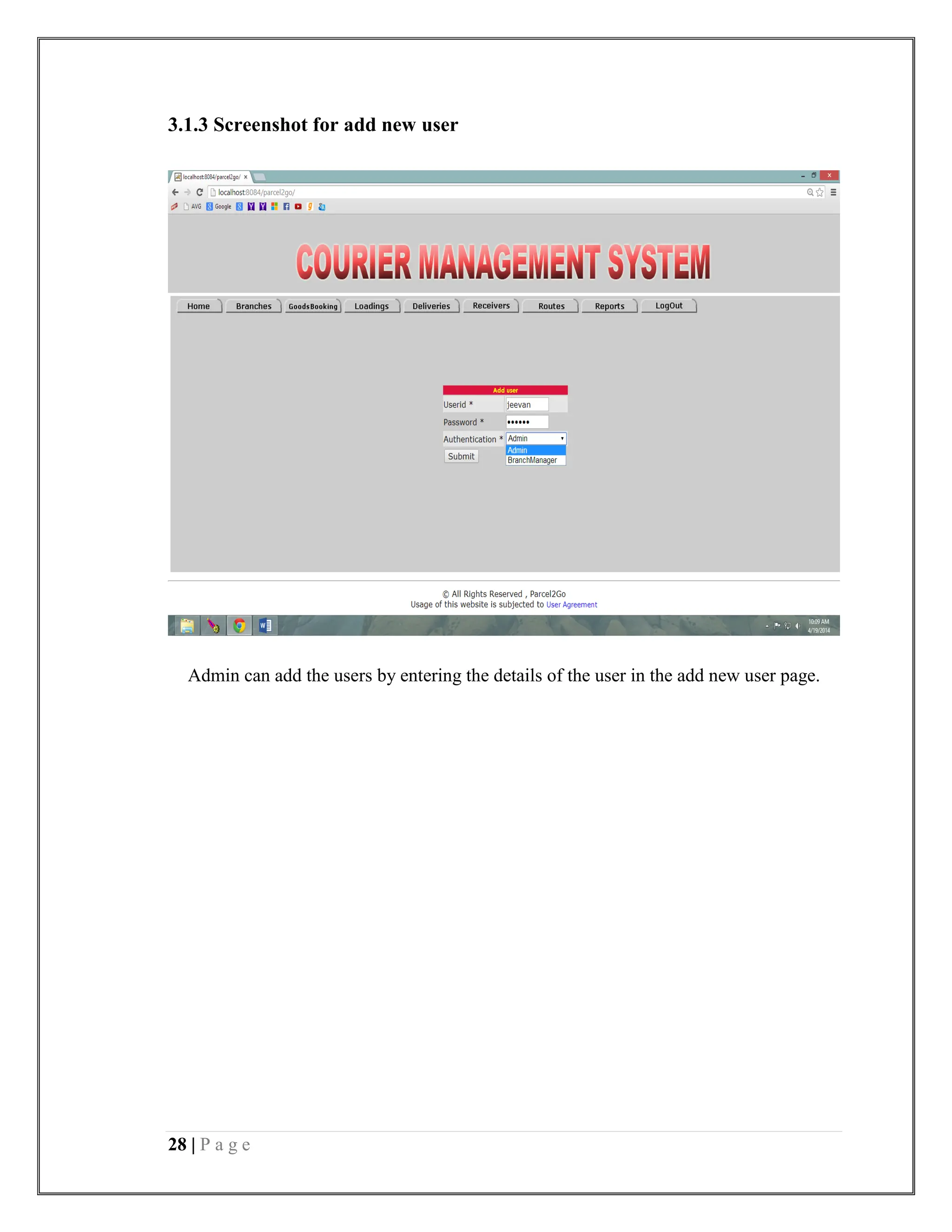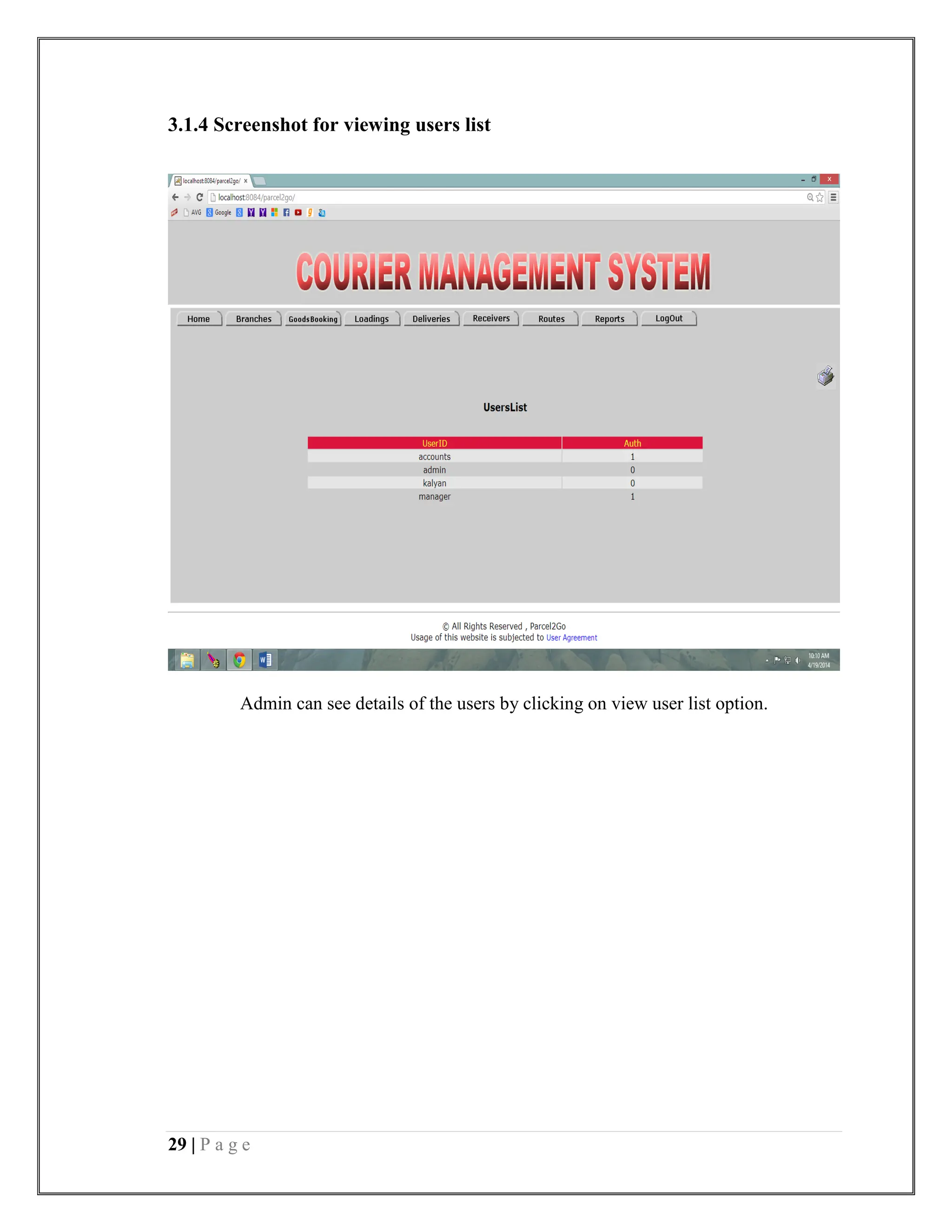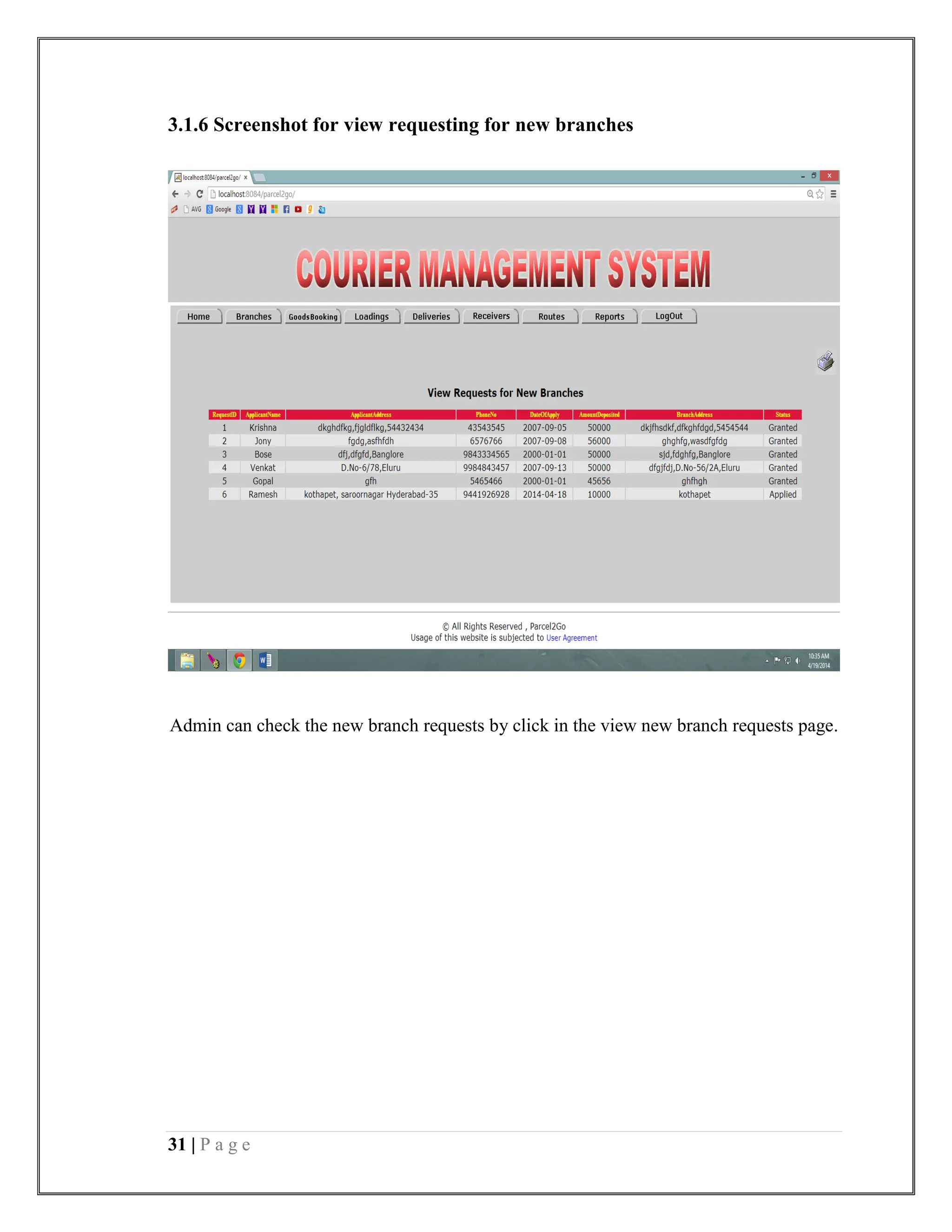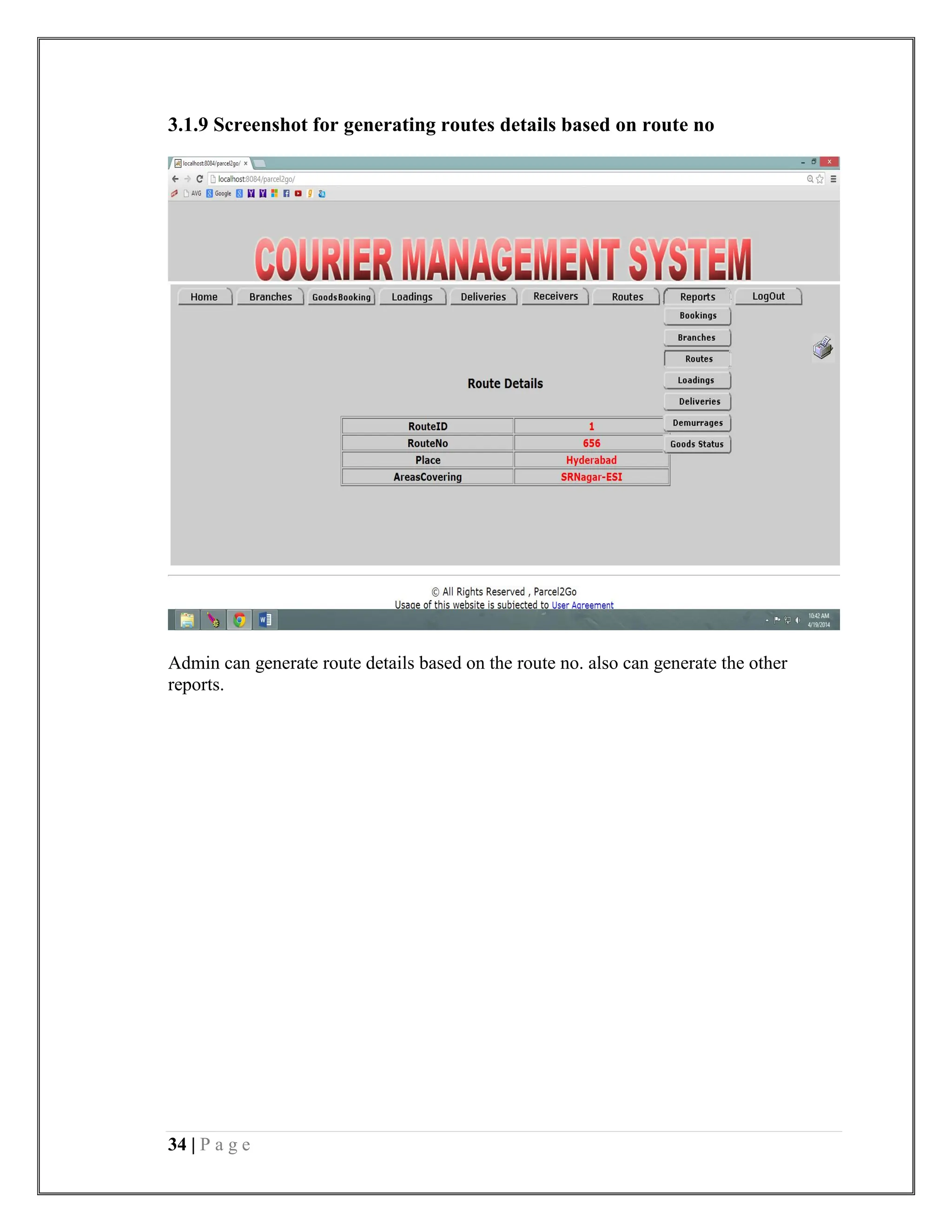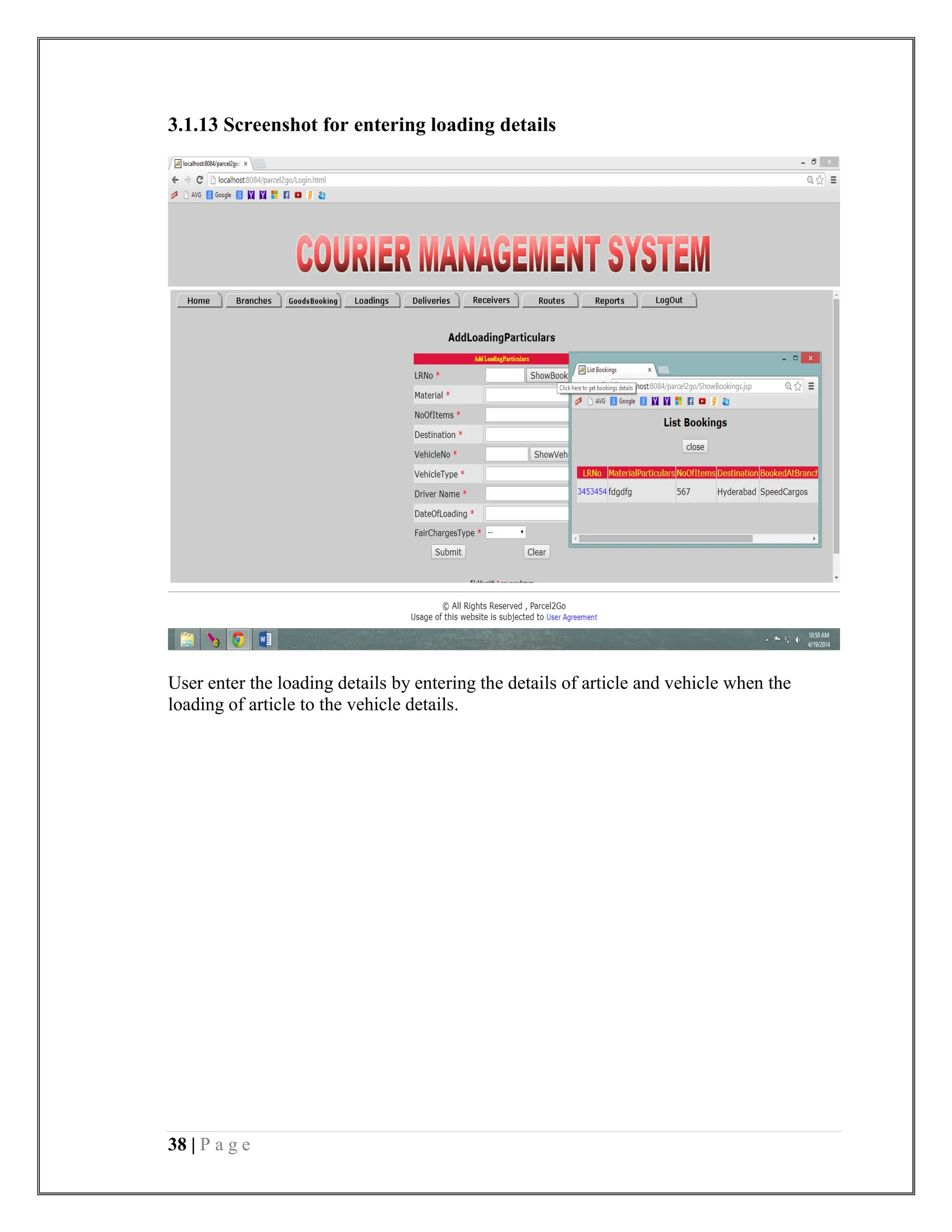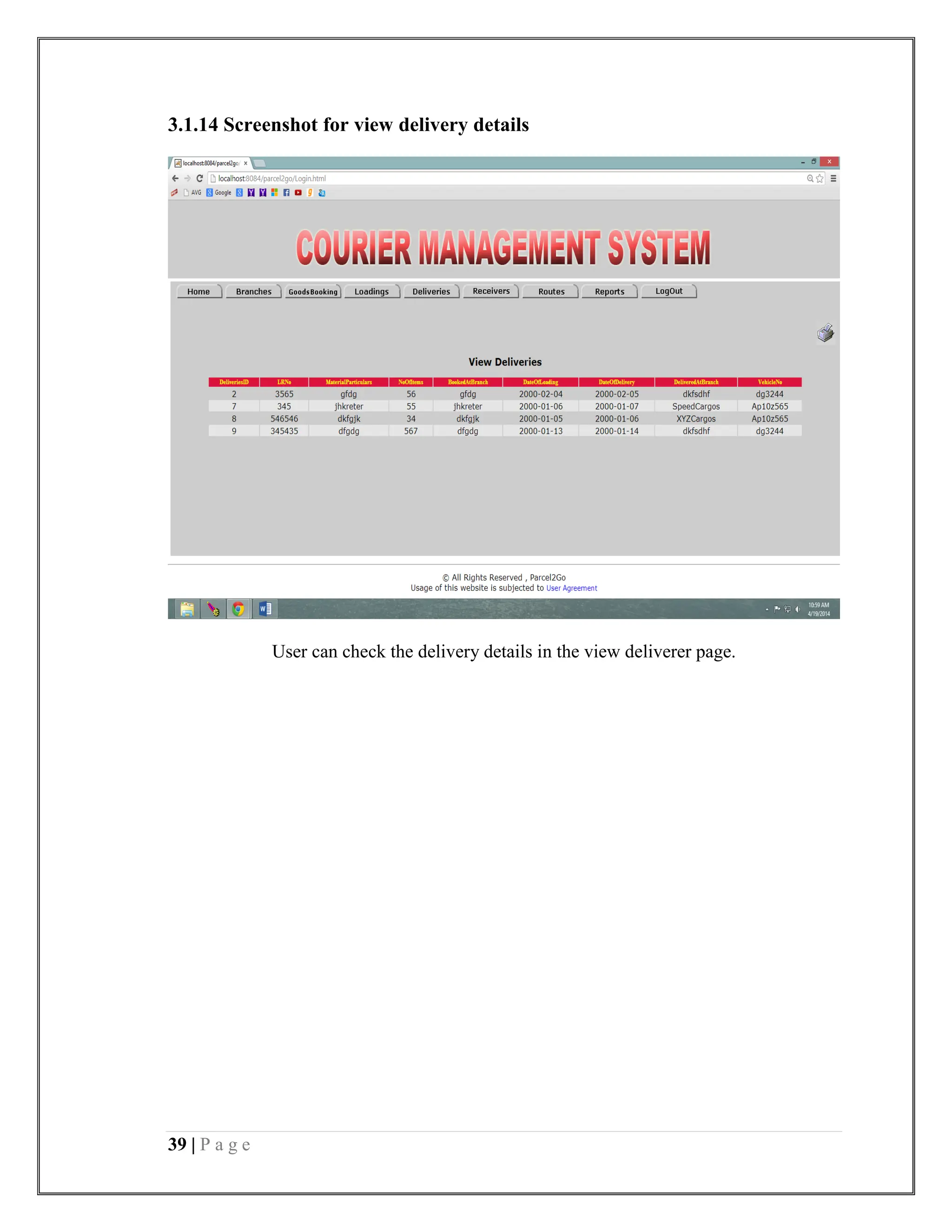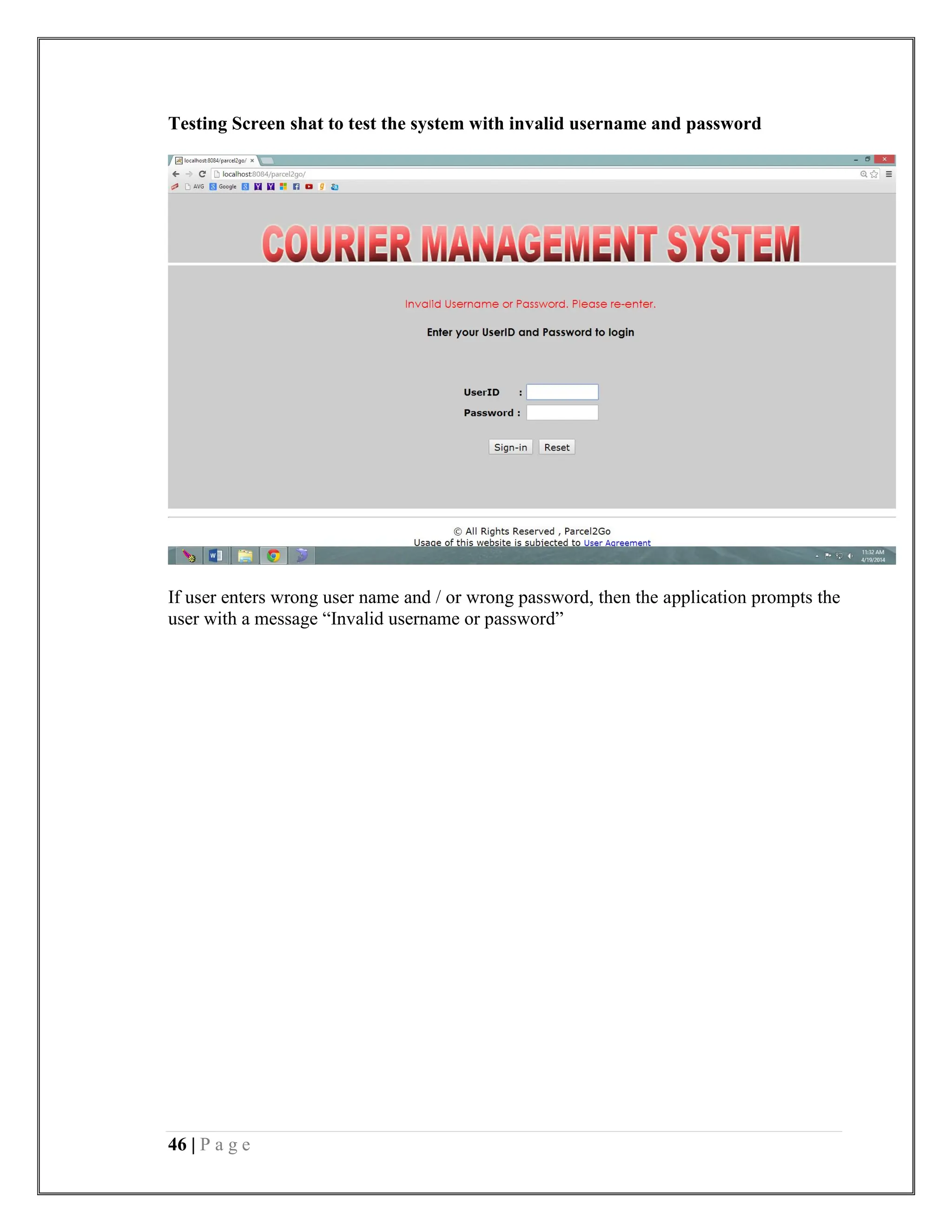The document details an internship report on a Courier Management System project aimed at modernizing cargo management through comprehensive software solutions. This system centralizes tracking and management of bookings, loading, and deliveries to overcome the limitations of existing manual processes. It includes features for various user roles, supports historical data management, and generates management reports, enhancing efficiency in courier operations.



















